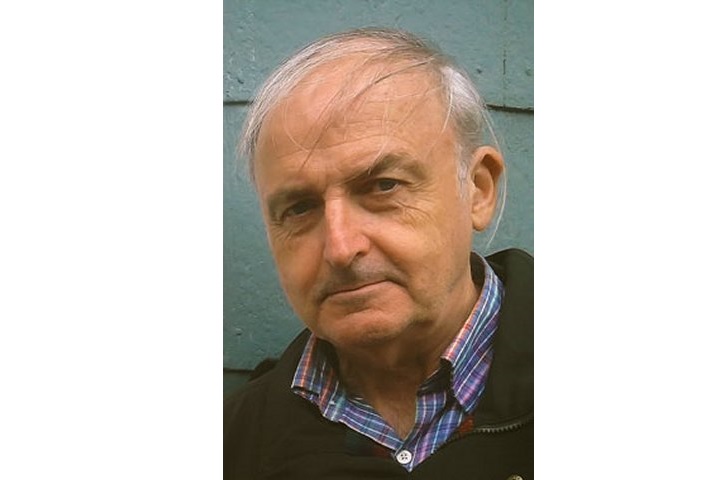


Johannes Fischer: You have authored or co-authored more than a 100 chess books. But what was the first chess book you have ever read?
Andy Soltis: It was a basic how-the-pieces-move primer I found in my local public library. All I remember was the large diagrams. That was enough to get me hooked. Ever since then I’ve believed graphics and illustrations are an extremely important part of a good chess book.
The first book I recall reading cover to cover was a Fred Reinfeld work, "Greatest Short Games of the Chess Masters." I still have it, or at least some of the tattered pages. The same goes for my copies of Reinfeld’s 1001 tactics. (Book abuse is one of my many sins.)
Reinfeld and Irving Chernev were my teachers.

Fred Reinfeld | Photo source: Chess Hall of Fame
When I became an IM Paul Keres wrote a column in Chess Life and said the way to become a good player starts with having a good teacher. This was the path of the promising young masters of the day, he said, and cited Karpov, Tukmakov, Rogoff…and Soltis. I laughed when I read that. I never had an actual teacher. And from what I’ve read, neither did Keres.
How did your career continue after having learnt the rules of the game?
It didn’t. It stopped and started. After first learning the rules, I played with a school friend, then gave up playing for more than a year. There were two or three times that I more or less abandoned chess during my years 12 to 15. I didn’t start taking the game seriously until I joined the Marshall Chess Club.
Looking back, my late start might have been a good thing. When you see a ten-year-old champion these days, you can’t tell whether they have talent – or simply began getting lessons at age five. Many very young champions seem to burn out quickly. I suspect the only true talent in a youngster is the ability to keep improving.
Did you have any role models, idols, players that particularly impressed and inspired you?
Like almost everyone starting out, I went through a Morphy phase, a Capablanca phase, and so on. We all went through a Nimzovich period in those days. Most of us recovered. In my very first tournament game I played 1. e4 e6 2. d4 d5 3. e5 c5 4. Qg4!? and won. My opponent, by the way, was Paul Magriel, who became a celebrated backgammon and poker player.
When I saw my first Mikhail Tal games, I couldn’t get enough Tal. I still have my copies of obscure books written by Baltic-American players, "Chess Psychologist Tal" and "The Unknown Tal." I played Tal openings, like the Najdorf, King’s Indian and Benoni. I didn’t answer 1. d4 with 1…d5 until I had been playing in tournaments for ten years.
You were born in Hazleton, Pennsylvania, but grew up in New York. How did that influence your chess career?
An old formula was: Geography=Opportunity. I found this was true of most of the great Soviet-era players: There were Moscow players, Kiev players, Leningrad players and very few others. In Britain there only seemed to be London players (until Miles and Adams). And in America there were New York players.
I would never have taken chess seriously if I had grown elsewhere. It was a golden age, when both the Marshall and Manhattan Chess Clubs had large active memberships. On Tuesdays I played in the weekly rapid transit tournament at the Marshall and on Friday I went to the Manhattan, for their rapid tournament. I could get experience against a couple of GMs and several masters every week. The club championships were often the most important US events of the year. Young players could serve as wall-board boys at a US Championship. Imagine what it was like standing a few steps from where Fischer was sitting and making his moves on a demonstration board.
What was the New York chess scene like when you became part of it?
It was built around the clubs, not tournaments. A serious player was someone who belonged to a club, and there were many outside of Manhattan. There was even one in the Astoria section of Queens, where I grew up. The Metropolitan League was the major competition of the year, almost always ending in a Marshall-Manhattan match. The first games I played against masters were in Met League matches.
Slowly, the definition of a serious player changed: It was someone who had a rating. The clubs were virtually forced to hold a Swiss System open every few months. The Marshall also held one-game-a-week tournaments. The first tournament I won was a Tuesday event limited to players rated 1400 to 1600. I graduated to a Wednesday night round robin for 1600 to 1800 players. These games made such an impression that I can tell, when I look at the score of a game I played 50 years ago, at which Marshall table I played it.
You are a 9-time Champion of the Marshall Chess Club. Can you tell us a bit more about your relationship with this prestigious club?
One day in 1962 I saw an item in the New York Times. The new US Champion, Larry Evans, would be giving a lecture and simul at the Marshall. This was during one of the periods when I was a serious school student and had almost abandoned chess. But I decided to give it another try.
I located the ivy-covered building and walked up that ancient stairway for the first time.
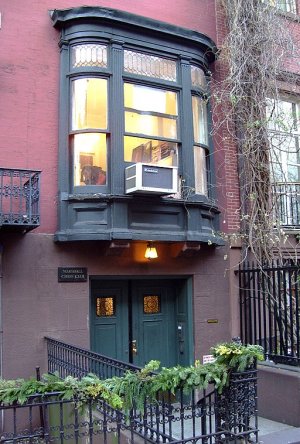
The entrance to the Marshall Chess Club at 23 West 10th Street, between Fifth and Sixth Avenues in Greenwich Village, New York City | Photo: "Beyond My Ken, Wikipedia"
At the top I was met at the top by a petite, gray-haired woman, sitting at a desk. She took my $5 and told me at which board to sit during the simul. I was disappointed by Evans. He talked about what a great game he had won against Eliot Hearst to win the recent US Championship, and how great his latest book was. I was also disappointed by the simul game. I trapped Evans’ f4-bishop in a Gruenfeld Defense with …g5 but then was quickly outplayed.
I felt embarrassed. All the other games were still going on. I waited for an appropriate moment to resign and quietly sneak out of the club, never to return. But when I got back to the top of the stairway, the little old lady was waiting. She smiled and lied about how well I had played. She handed me a club membership application. I don’t know why but I signed it. That moment changed my life. The woman was Caroline Marshall.
Over the years I became much more involved in the Marshall, for example, as a club vice president. This became difficult when I switched to a midnight-to-8 a.m. shift at the New York Post. One of the few tournaments I could still play in was the Marshall championship because it was a one-round-a-week round robin. There was an evening at the club in 2015 devoted to a celebration of past Marshall champions. When I spoke, I said it was simply a matter of luck that I won the tournament nine times. Maurice Ashley, who spoke after me, laughed. Luck, he said, had nothing to do with his winning the 1993 club championship, which was true.
In 1972 you became an International Master, in 1980 you became Grandmaster, and in 1971 you were on place 74 on the world’s ranking list though you have never played chess professionally. Were you ever tempted?
Many times. But I never considered it seriously. There are several reasons. One is that I landed a good job, as a general assignment reporter at the New York Post, soon after I graduated from college. There was little incentive to give it up.
Andy Soltis 1981 | Photo: Marcy Soltis
Professional players were not well respected. The only time I remember Arthur Bisguier getting angry was when he recalled how he and his colleagues were called "chess bums." He said he used to wear a pin he was given for a good US result in an Olympiad. But when strangers asked, he said he won it in an international wrestling contest.
I might have considered a chess career before I was hired by the Post. But I lacked the single-mindedness of Walter Browne. Walter was two years younger than me. He dropped out of school at age 16 because he knew that he was never going to do anything but play chess. And poker, which paid better, especially at 2 a.m., he said. I had no definite idea what I was going to do until I was 22.
By the time I got my first invitation to play in the US Championship, I had to turn it down because I didn’t have enough vacation time for it. I regretted that, of course. But I also sensed that I would need to improve by at least 100 rating points to earn a living by competing internationally. I was sure I could do that. But it would mean a pro career that was likely to last no more than 15 years. It wasn’t worth the trouble.
Besides, if I became a professional, what would I do for a hobby?
You have written several opening books, and an important line of the Sicilian Dragon is named after you. How serious did you study chess when you were playing actively?
Before I became an IM I devoted many of my Saturdays and other free hours to studying. When I switched to working a night shift at the Post I often found time during slow periods. This was before computers, so analyzing new opening ideas took longer. Now when I look at some of my 3 a.m. discoveries they look like, well, the kind of ideas you often get at 3 a.m.
One distinct memory: My first out-of-town assignment for the Post was to pose as a student radical at a convention of what was called the Weatherman faction. It was held in Flint, Michigan. At the end of each day, after filing my story with the paper, I spent the evening in my hotel room analyzing …h5 in the Dragon. By the time I left Flint I was more confident it was sound.
By the way, a few months after that, five members of the Weatherman group who had been at Flint, tried to build a terrorist bomb in a Manhattan apartment very near the Marshall. It detonated accidentally, killing two of them, including a high school classmate of mine. I saw the rubble three days later when I played my next game in the club championship. If all of dynamite had exploded, it would have destroyed the entire city block, including the Marshall.
Looking back on your chess career – what were your biggest successes?
I can joke that I am a world champion: I was a member of the gold medal winning Americans at the World Student Team Championship in Haifa in 1970. And I can add that I am the only person in the world who played chess with Bobby Fischer and interviewed Donald Trump. Of course, it would be more of an accomplishment to say I interviewed Bobby and played chess with Trump. But…
And what were your best or most memorable games?
I’m trying to find them now, with the idea of writing my memoirs. The trouble is those damn engines keep punching holes in what I thought were brilliancies. Perhaps my two games with Karl Heinz Maeder are still publishable.
During your career as a chess player and writer you have met a lot of prominent people. Are there any memories that particularly stick to mind?
Playing Fischer stands out: The Manhattan Chess Club never had permanent quarters and when they moved again in 1971, Fischer suggested they mark the occasion with a speed tournament. I was invited and paired with him in the first round. I got a bad position out of the opening and wondered how I was going to avoid humiliation. But he overlooked a tactic and I won his queen for a rook. Nevertheless, I knew I was going to lose. Fischer had an aura that overwhelmed me. I took longer and longer to make simple moves. With seconds left -- this was before increments -- I began making illegal moves.
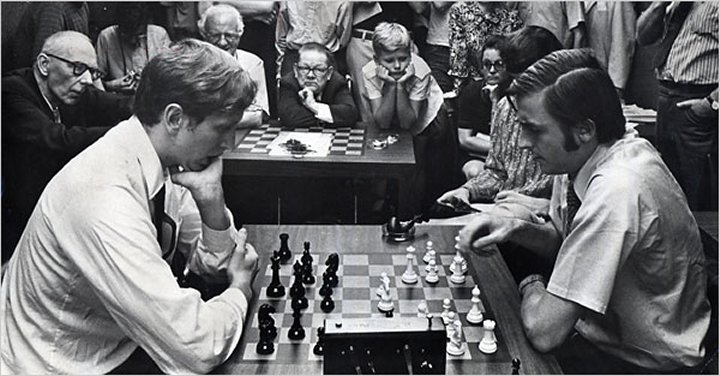
Bobby Fischer (left) playing blitz against Andy Soltis (right) in the Manhanttan Chess Club in 1971| Photo: Larry Morris/ NY Times
This was worse than humiliating: Dozens of fans were watching me play illegal moves and losing. I resigned when he was about to queen a pawn. I lost the second game because I played a rare, new opening I didn’t understand, the Sveshnikov Sicilian. But I finished second in the tournament, the strongest speed event in the US for many decades. The New York Times ran a long story the next day with a photo of Bobby and me. In the background you can see some of the major figures of New York chess, Hans Kmoch, Jack Collins, Walter Goldwater, Burt Hochberg and others.
It’s funny but I have only vague memories of beating Samuel Reshevsky in a speed tournament and losing to Viktor Korchnoi in another. But I’ll never forget the strange ways I won tournament games from Bent Larsen and Svetozar Gligoric. I realized I was winning a piece from Larsen, in a New York Open. But I didn’t understand when he suddenly nodded to me, signed the scoresheet, stood up and walked away. He had resigned.
After 28.Nc2 Black has 28...Ne8 and the bishop on a5 is stranded, and after 28.Bxc7 Black wins with 28...bxa3.
I also won a piece from Gligoric but couldn’t figure out what to do with it. This was in the ancient days of adjournment. I stared at the board for a long time before resumption. Then I heard someone standing behind me ask "What if king moves back?" I turned around it was Pal Benko. He suggested ways to avoid perpetual check. It seemed he wanted to beat Gligoric more than I did.
Instead of becoming a chess professional, you became a writer and journalist. When and how did you discover your passion and your talent for writing?
It began when Ed Edmondson phoned me at home and asked, "Do you have a typewriter?" Ed had created a position for himself, executive director of the US Chess Federation. He was trying to find ways to close the chronic USCF budget deficit. He discovered that when US players went to foreign tournaments they came home with tournament bulletins and then stuffed them in closets or threw them away. Ed realized the game scores were a valuable commodity. Unannotated master games eventually became the staple that kept publications like Players Chess News and Inside Chess alive.
Edmondson asked me if I could cleanly type the bulletins of a tournament that was ending, Netanya 1969. Few Americans had portable typewriters at the time. But I did. (This was the last time I wasn’t behind the technological curve.)
After I typed up the bulletins, Ed had the pages photo-offset and bound into a booklet he sold through Chess Life. Then he asked if I had any other ideas for books. Well, I told him, I was working on a collection of Boris Spassky’s best games. Ed surprised me by saying the USCF would publish it. This was happening as Spassky was winning his world championship match from Petrosian.
But a short time later I started my tryout test as a Post reporter. I passed the test – partly because I wrote a story about chess hustlers, featuring Asa Hoffmann. I never expected to write another book. Then Edmondson forwarded a letter to me from Irving Chernev. He said he loved my book and wanted to see what I could write about Capablanca and Lasker.
When Carrie Marshall encourages you to take chess seriously and then Irving Chernev wants you write about it, how can you say no?
Are there any writers that you particularly admire and that inspired you?
Chernev, of course. I couldn’t figure out how he made a living out of chess books until I realized it was just his hobby.
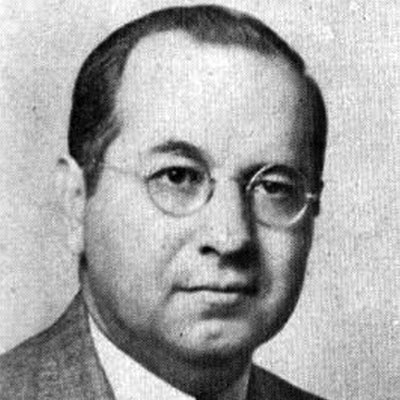
Irving Chernev | Photo source: Chess Hall of Fame
I thought Reuben Fine’s writing was excellent – until I had contact with him. He wanted me to rewrite "Practical Chess Openings" for him, for little money and no credit. I was also asked by his publisher to evaluate his manuscript about the Fischer-Spassky match 1972 before it was published. It was awful.
Frankly, I found most chess writing is pretty poor. Grandmasters routinely lie about what they saw during a game. It’s worse now because they can get variations from computers and claim they calculated it.
I still respect Reinfeld, although I recognize he wrote too much. So did I. But I didn’t write opening pamphlets for the money. I did it because it exploited my skills as a quick writer and a good sense of what readers are like.
You are an extremely prolific writer. How do you get the ideas for your books and articles?
Whenever I finish a major book project I take a break. I look through my collection of old magazines, web printouts and books. This helps remind me what has already been written, by me or someone else. One of my writing mottoes is: Don’t repeat yourself.
That motto is getting harder to follow. Next September will mark my 50th year of writing a weekly column for the New York Post. I don’t know if anyone in America has been writing a newspaper column for that long, on any subject.
My Chess Life column is in its 44th year. When I come upon an idea that seems original and appropriate for a magazine piece, I start a computer file about it. Some of my ideas about books or magazines have been in my computer for more than ten years. I add to a file when I see a game or quotation or factoid that seems appropriate. When I have enough material, a column almost writes itself.
In 1999 you published "Soviet Chess 1917-1991", a seminal and well-researched book about the history and the development of chess in the Soviet Union. 2014 followed a biography about Mikhail Botvinnik, which was named Book of the Year by the Chess Journalists of America and the English Chess Federation, and in 2018 you published a multibiography about Tal, Petrosian, Spassky and Korchnoi. Three years later followed another multibiography, this time about Smyslov, Bronstein, Geller, Taimanov and Averbakh. All four books are well-researched and have uncovered a lot of previously unknown facts about Soviet chess and Soviet players. When did you get interested in Soviet chess and how did you research the materials for these books?
It all started with Tal, no surprise. I wanted to learn as much as I could about him. Paul Magriel, my first tournament game opponent, showed me the Four Continents book store in Manhattan. It was nothing like the dimly-lit den of subversives depicted in the movie "Pawn Structure." I started visiting the Four Continents every few weeks and buying copies of the latest "Shakhmatny Bulletin" and "Shakhmaty v SSSR" for 25 cents. Then I bought whatever books came out in Russian. It helped when I gave up on a losing struggle to become fluent in Spanish. In the 12th grade I switched to Russian. It was the second-best decision I made in my life. (Marrying my wife Marcy was number one. By far.)
A pivotal moment for me was an afternoon during the 1989 GMA tournament in Moscow, after I had finished my game. A Soviet government friend from New York introduced me to Tal. I was finally going to meet my hero. But I wasn’t prepared for the handshake: How could I not have known about his missing fingers?
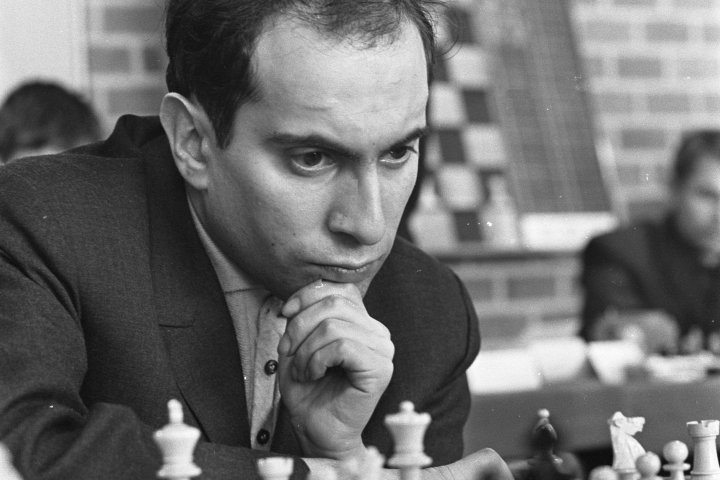
Mihail Tal | Photo: Dutch National Archive
It struck me that there are many mysteries in the lives of great Soviet players. I eventually discovered Russian-language web sites. I was amazed by the biographical details I found. Tal was romantically involved with a KGB agent? Tigran Petrosian was a devoted John Belushi fan and regularly watched The Blue Brothers video? The World War II experiences of David Bronstein, Yuri Averbakh and Korchnoi were horrifying, yet intriguing. The Soviet books were the most exhausting projects I ever attempted. They don’t sell nearly as well as instructional books – a small fraction, in fact, of "Pawn Structure Chess." But I never enjoyed any book writing move.
In 2003 you published "Los Voraces", a fictitious, light-hearted parody of a tournament book that is also a parody of hard-boiled crime novels. Did you ever try your hand at novel writing or other fiction?
I had written two Sherlock Holmes stories in my Chess Life column but wanted to try something more ambitious. I had "Los Voraces 2019" germinating in my mind since playing in the Lone Pine tournaments and realized how isolated the town was. I wondered if I could do a roman a clef in which the world’s elite players begin to be murdered, one by one.
There had been chess novels before but not with actual chess games, diagrams, tournament cross tables. I convinced Hanon Russell to run it when he had his Chess Café site. I was trying to write in the manner of Dickens, one chapter a month. I had only a vague idea of how it would end when I began it in 2001. When it was over, Robert Franklin of McFarland & Company liked it and published it in soft cover. He jokingly called it "Ten Little King’s Indians." Google Agatha Christie if you don’t get it.
I hoped to write another novel for Hanon, about the origin of the modern rules of chess. It was going to be set in Florence in the 1490s. There’s a rich collection of possible characters to work with: Lorenzo de Medici, Machiavelli, Pico della Mirandola, the chess-hating Savonarola and so on. But I couldn’t figure out the main character, the "man who invented chess." So I put it aside. Maybe I’ll try to start it again some day…
You were an editor for the New York Post and retired in 2014. But you continue to write chess books and recently, you published books about Magnus Carlsen and Fabiano Caruana. What do you think about Carlsen and Caruana as players, and what do you think about modern chess and the new generation of chess players?
I’m amazed at how both of them have injected vitality into this old game. Each world champion finds a way be the antithesis of his immediate predecessor. Whether it’s intentional or not, Carlsen is the anti-Kasparov.
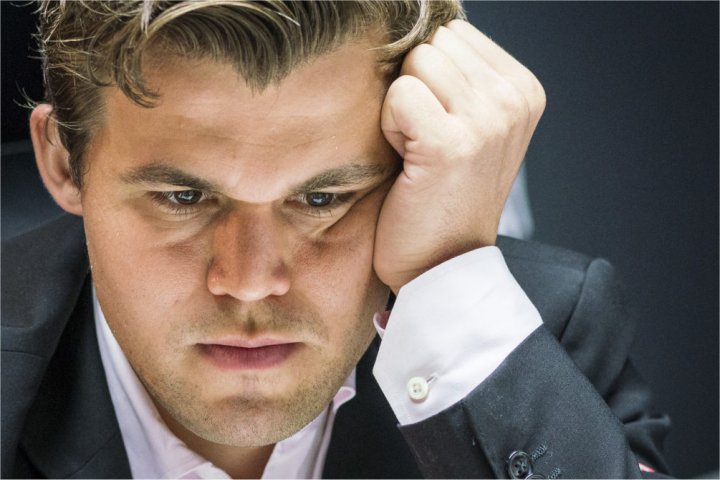
Magnus Carlsen | Photo: Lennart Ootes
His games tell us chess is not all calculation and certainly not all opening preparation. I wonder if anyone has ever had Carlsen’s instinct for finding the right move instantly. Maybe Capablanca or Anand. The greatest players are the ones who change the way we play. Morphy did that, Lasker, Capa, Botvinnik, Bobby, and now Carlsen.
Caruana first fascinated me because of his remarkable life story, including "The Streak," the bidding war to get him to play for America, the amazing match with Carlsen. When I took a closer look at his games, I was surprised.
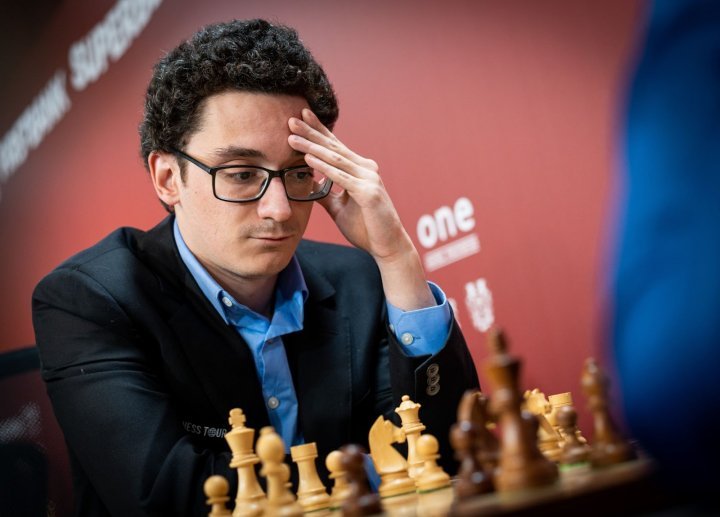
Fabiano Caruana | Photo: Lennart Ootes
He could innovate on the fifth move, create new gambits after move ten and introduce new strategic concepts. I was particularly impressed by the way he turned the Steinitz-Lasker theory of defense upside down in beating the Berlin Defense of Nakamura in 2016 and Anand in 2017. I consider "Fabiano Caruana, 60 Memorable Games" better than my best Carlsen book.
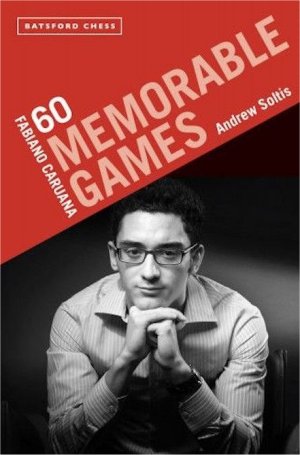
Cover of Andy Soltis' book about Fabiano Caruana
Playing chess, writing about chess, and working as a journalist – does that leave time for other hobbies and interests?
Plenty. For example, Marcy and I love to travel. We have played with koalas in Australia, walked the walls in Dubrovnik, climbed the Great Wall in China, rode an elephant in Bali and a camel in Marrakech, explored the night zoo in Singapore and tested my vertigo atop Sugarloaf and Corcovado in Rio. Friends used to ask us about our trips to the Taj Mahal, the Kremlin or Devil’s Island. Now they want to know what it was like walking through Wuhan and Odessa.
| Advertising |